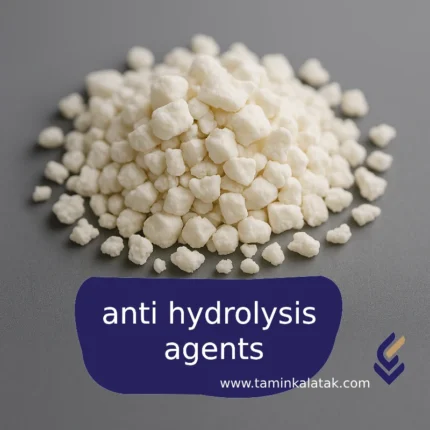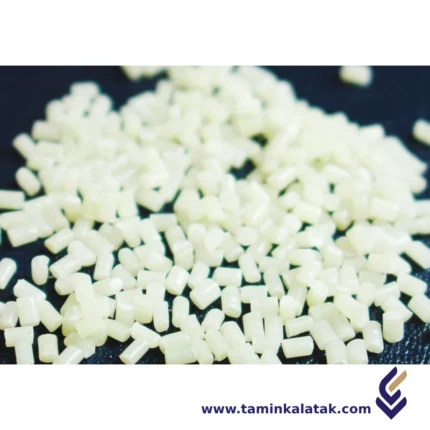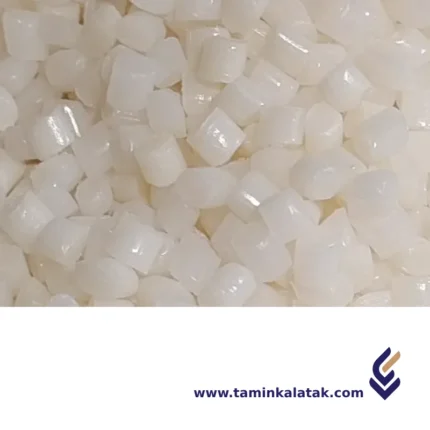Anhydrous Calcium Hydrogen Phosphate
Anhydrous calcium hydrogen phosphate is a chemical compound with the formula CaHPO₄. It's a white, odorless powder that is widely used in various industries, including food, pharmaceuticals, and agriculture.
Properties of Anhydrous Calcium Hydrogen Phosphate
- Insoluble in water: This property makes it suitable for various applications where water solubility is not desired.
- Mildly alkaline: It has a slightly alkaline pH, which can be beneficial in certain applications.
- Stable: It is a stable compound that does not readily decompose under normal conditions.
Applications of Anhydrous Calcium Hydrogen Phosphate
- Food Industry:
- Dietary supplement: It is used as a calcium and phosphorus supplement in various food products, particularly in fortified foods and dietary supplements.
- Food additive: It acts as an acidity regulator, leavening agent, and firming agent in various food products.
- Pharmaceutical Industry:
- Dietary supplement: It is used in dietary supplements to provide calcium and phosphorus.
- Pharmaceutical excipient: It is used as a filler, diluent, and disintegrant in tablets and capsules.
- Agriculture:
- Fertilizer: It is used as a slow-release phosphorus fertilizer to improve soil fertility.
Safety Considerations
Anhydrous calcium hydrogen phosphate is generally considered safe for consumption and handling. However, excessive intake can lead to hypercalcemia, a condition characterized by high levels of calcium in the blood. It is important to follow recommended dosages and consult with a healthcare professional if you have any concerns.
Anhydrous citric acid
Key Applications
- Food Industry
- Beverages
- Pharma
- Personal Care
Anhydrous Trisodium Phosphate
Properties of anhydrous trisodium phosphateHigh solubility in water: It dissolves easily in water and forms a strong alkaline solution. Strong alkalinity: The pH of its aqueous solution is very high and it has strong alkalinity. Chelating agent: It binds to metal ions such as calcium and magnesium and separates them from the environment. Moisture absorption: It easily absorbs moisture from the air and may form clumps.
Applications of anhydrous trisodium phosphateDetergent industry: It is used as a strong cleaning agent, water softener and foam builder in the production of various detergents. Food industry: It is used in the food industry as an acidity regulator, antimicrobial agent and softener. Water treatment industry: Used to soften water and remove calcium and magnesium ions. Textile industry: Used as a color-fixing agent in the dyeing and printing process of fabrics. Paper industry: Used as a bleaching agent and pH regulator in the paper production process.
Safety issuesTrisodium phosphate anhydrous is a strong chemical and can cause irritation and damage if it comes into contact with the skin, eyes, or inhaled. Therefore, protective equipment such as gloves, goggles, and a mask should be used when working with this material. It should also be stored in a dry and cool environment.
Animal-drawncarts Tires
Anionic Surfactant
Applications of anionic surfactantsDetergent industries: Used in the production of shampoo, hand wash, dishwashing liquid, laundry detergent and other detergent products. Cosmetics and health industries: Used in the production of lotions, creams and other cosmetic and health products. Textile industries: Used as a moisturizer and detergent in the textile industry. Oil and gas industries: Used in oil and gas drilling and extraction processes.
Advantages of anionic surfactantsHigh cleaning power: They remove fats and oils well. Good foaming: They create abundant foam in detergent products. Reasonable price: They are more affordable than other types of surfactants.
Anti-foaming Agents / Anti-webbing
- Food Processing
- Textile Industry
- Paper Manufacturing
- Petroleum Industry
- Pharmaceutical Industry
- Water Treatment
Anti-Hydrolysis Agents
Anti-Hydrolysis Agents are typically organic or inorganic compounds added to polymers to enhance their resistance against degradation caused by moisture and water exposure. These additives commonly include carbodiimides, phosphites, organophosphites, or phenolic derivatives, which work by either absorbing or neutralizing water molecules or inhibiting hydrolytic reactions, thus preventing the breakdown of polymer chains.
These agents are especially useful for polymers such as polyurethanes (PU), polyesters (PET, PBT), and polyamides (nylons), which are more susceptible to hydrolysis.
Key Features of Anti-Hydrolysis Agents
-
Enhanced stability against moisture and water vapor.
-
Reduction in polymer chain degradation under humid environmental conditions.
-
Good thermal stability, allowing use in industrial processes such as injection molding or extrusion.
-
Compatibility with a wide range of polymers without affecting color or mechanical properties.
Applications of Anti-Hydrolysis Agents
✅ Automotive Industry
Used in interior components to prevent moisture-induced degradation, especially in regions with high humidity or harsh environmental conditions.
✅ Packaging Industry
Improves the durability of polymeric packaging materials exposed to water or steam, such as refrigerated or moist food packaging.
✅ Construction Industry
Applied in insulation materials, window profiles, and other polymer-based building components to resist weathering and moisture exposure.
✅ Electronics Industry
Prevents polymer degradation in electronic housings, wire coatings, and cable insulation exposed to humidity and temperature variations.
✅ Footwear and Textile Industries
Used in polymeric shoe soles and synthetic fibers to enhance durability and resistance to moisture-induced deterioration.
Disadvantages of Anti-Hydrolysis Agents
-
Slightly increases final product cost.
-
Requires careful selection based on polymer type and usage conditions.
-
Possible incompatibility with certain other additives, such as UV stabilizers.
Advantages of Anti-Hydrolysis Agents
✅ Extends the service life of polymer components.
✅ Ideal for hot, humid, or outdoor environments.
✅ Provides long-term chemical and mechanical stability.
✅ Maintains the core properties of the polymer when properly formulated.
Anti-Scorching Agents
-
Benzotriazole Derivatives
- Vulcanization process
-
Rubber Compounding
- Phthalate Derivatives
Anti-skid Chain
Anti-skid Stud
Anti-UV Masterbatch
StructureThe structure of an anti-UV masterbatch consists of a combination of UV stabilizers, a carrier resin, and sometimes additional additives to enhance performance. The UV stabilizers, which can include UV absorbers and hindered amine light stabilizers (HALS), are the active components that protect plastics from degradation by absorbing or neutralizing harmful ultraviolet radiation. These stabilizers are uniformly dispersed within a carrier resin, which is typically the same or compatible with the final polymer to ensure easy blending during processing. The carrier resin acts as a medium that holds and delivers the UV stabilizers into the plastic matrix. Depending on the application, other additives such as antioxidants, processing aids, or heat stabilizers may be included to improve the overall durability of the final product. The masterbatch is typically produced in pellet or granular form, allowing for uniform distribution when mixed with base polymers during the manufacturing process.
PropertiesAnti-UV masterbatch possesses several key properties that enhance the durability and performance of plastic products exposed to sunlight. It effectively absorbs and dissipates ultraviolet radiation, preventing polymer degradation, discoloration, and brittleness. The masterbatch is designed to be thermally stable, ensuring that it can withstand high processing temperatures without losing its effectiveness. It is highly compatible with various polymers, including polyethylene, polypropylene, PVC, and ABS, allowing for easy incorporation into different plastic formulations. The dispersion quality is crucial, ensuring uniform distribution of UV stabilizers within the polymer matrix to achieve consistent protection. Additionally, anti-UV masterbatch can be tailored to specific applications by combining different types of UV stabilizers, such as UV absorbers and hindered amine light stabilizers (HALS), for comprehensive protection. It also maintains the mechanical properties of plastics over time, reducing surface cracking and extending the lifespan of products used in outdoor or high-exposure environments.
Applications
- Agricultural films, such as greenhouse covers and mulch films, to protect crops from UV damage.
- Outdoor furniture and construction materials, including pipes, sheets, and roofing, to prevent weathering and brittleness.
- Automotive plastic parts, such as dashboards and exterior trims, to resist sun-induced fading and cracking.
- Packaging materials, especially for products sensitive to UV exposure, such as food and pharmaceuticals.
- Electrical and electronic components, ensuring longer durability for plastic casings exposed to sunlight.
- Textile fibers and synthetic fabrics, improving UV resistance in outdoor clothing and industrial fabrics.
Advantages
- Protects plastics from UV-induced degradation, extending product lifespan.
- Reduces discoloration, brittleness, and surface cracking in exposed plastic materials.
- Enhances thermal stability, making it suitable for high-temperature processing.
- Compatible with various polymers, allowing flexibility in application.
- Cost-effective solution compared to using inherently UV-resistant polymers.
Disadvantages
- May slightly alter the color or transparency of clear plastic products.
- Effectiveness depends on the concentration and type of stabilizer used.
- Higher costs compared to non-UV-stabilized plastic formulations.
- Prolonged exposure to extreme UV conditions may still lead to gradual degradation over time.
Antibacterial Masterbatch
StructureThe structure of an antibacterial masterbatch consists of a carrier resin, an antibacterial agent, dispersing agents, stabilizers, and processing aids. The carrier resin, such as polyethylene (PE), polypropylene (PP), or polystyrene (PS), serves as the base material that ensures compatibility with the final plastic product. The antibacterial agent is the key active ingredient, which can be silver-based (Ag+ ions), zinc-based (ZnO, Zn ions), organic biocides (such as triclosan or quaternary ammonium compounds), or copper-based (Cu+ ions). These agents work by disrupting bacterial cell membranes, inhibiting their metabolism, or preventing their adhesion to surfaces. To ensure uniform distribution, dispersing agents and stabilizers are added to prevent agglomeration and degradation of the antibacterial particles. Additionally, processing aids enhance the flow properties and thermal stability of the masterbatch during plastic manufacturing. In terms of functionality, the antibacterial particles are encapsulated within the carrier resin and gradually migrate to the surface over time, providing long-lasting antimicrobial protection. This structure makes antibacterial masterbatches highly effective in applications such as medical devices, food packaging, and consumer goods, ensuring improved hygiene and product durability.
PropertiesAntibacterial masterbatch possesses a range of properties that make it an effective solution for antimicrobial plastic applications. It provides broad-spectrum antimicrobial protection, inhibiting the growth of bacteria, fungi, mold, and algae while ensuring long-lasting effectiveness through the gradual release of active agents. Many formulations use a non-leaching mechanism, meaning the antibacterial agents remain embedded in the polymer matrix, preventing washout or depletion. The masterbatch is highly dispersible, ensuring even distribution of antibacterial agents without compromising the mechanical strength or flexibility of the final plastic product. Additionally, it exhibits excellent thermal stability, withstanding high processing temperatures (typically between 200–300°C) without degradation. Many formulations are also UV and oxidation-resistant, ensuring long-term performance in various environments. Chemically, antibacterial masterbatch is compatible with a wide range of polymers, including PP, PE, PET, PVC, and ABS. It meets strict safety and regulatory standards, making it non-toxic and safe for food contact applications, with compliance to FDA, EU, and REACH regulations. Furthermore, it is easy to incorporate into plastic manufacturing processes such as extrusion, injection molding, and blow molding, and can be customized to achieve specific antimicrobial performance levels.
Applications of Antibacterial Masterbatch
- Food Packaging – Prevents bacterial growth on plastic packaging for longer shelf life.
- Medical Devices – Used in surgical instruments, hospital trays, and equipment to maintain hygiene.
- Consumer Products – Incorporated in household items like cutting boards, toothbrush handles, and baby products.
- Textile Industry – Used in antimicrobial fabrics for sportswear, medical textiles, and upholstery.
- Automotive Industry – Applied to interior components to reduce microbial contamination.
- Electronics – Used in device casings, keyboards, and remote controls to prevent bacteria buildup.
- Public Transport & Infrastructure – Implemented in handrails, seats, and handles to maintain hygiene in public places.
Advantages of Antibacterial MasterbatchPrevents Bacterial Growth – Reduces microbial contamination on plastic surfaces. Enhances Product Longevity – Prevents material degradation caused by bacteria. Improves Hygiene & Safety – Ideal for healthcare, food, and consumer products. Odor Reduction – Prevents bad smells caused by bacterial activity. Customizable – Can be tailored to different polymers and processing requirements. Cost-Effective – Long-term savings by reducing the need for frequent cleaning and replacements.
Disadvantages of Antibacterial MasterbatchPotential Toxicity – Some antibacterial agents may raise health concerns. Regulatory Compliance Issues – Must meet strict safety and environmental regulations. Limited Effectiveness – May not work against all bacteria and fungi. Environmental Concerns – Some formulations may contribute to antimicrobial resistance. Increased Cost – Adds to production expenses compared to standard plastics. Performance Variation – Effectiveness can depend on temperature, humidity, and exposure conditions.










